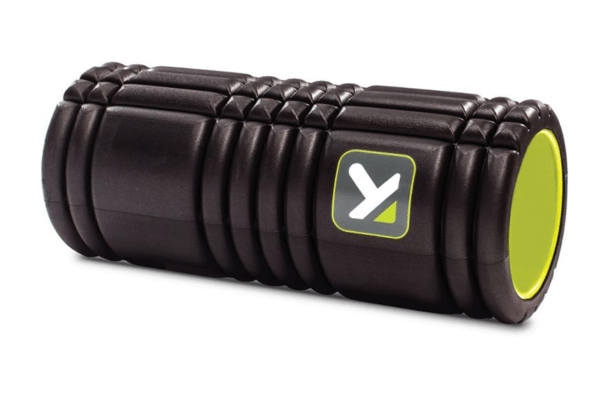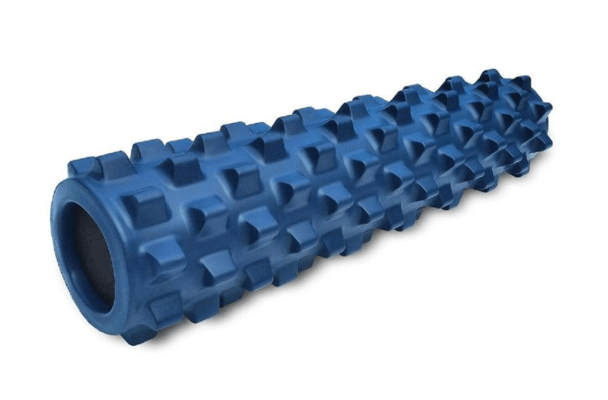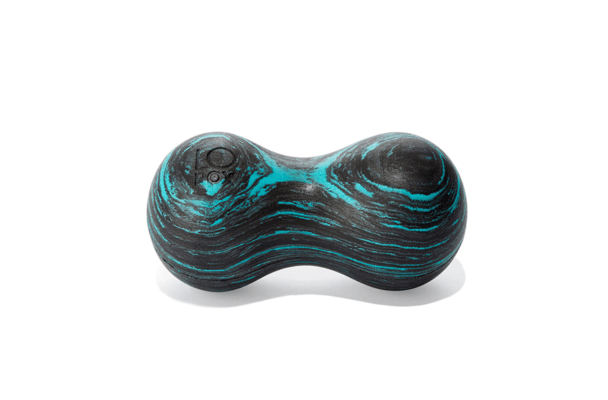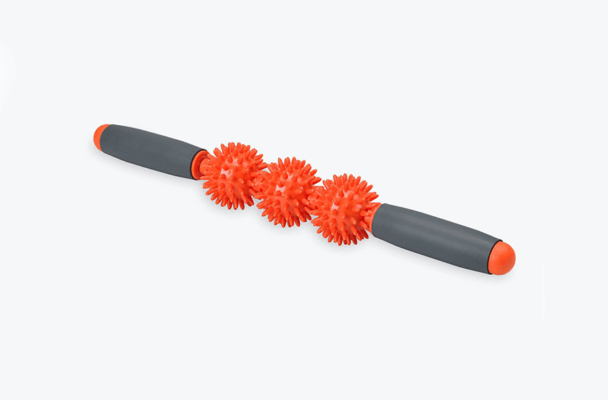How to Make Foam Rolling Feel Just Like a Full-Body Massage
“Tightness and adhesions (AKA knots) in your body’s tissue is a natural response to exercise, injury, and lifestyle,” says MINDBODY wellness manager and certified personal Kate Ligler. “The good news is that a foam roller is a great tool to loosen and release painful tissue and uncomfortable muscle tension—restoring range of motion and helping to re-engage muscles to their full strength and power.”
Since you definitely want to add foam rolling to your recovery routine after reading that, ahead you’ll find four of our favorite foam rollers, as well as expert-backed tips for rolling out all the major muscles in your body.
How to roll each area of your body
Quads: “Lay face down with your foam roller resting against your hip allowing your foot to be lifted off the ground,” instructs Rumble Boxing trainer and CPT Dillon Spicer. “Use the support of your forearm and opposite leg to slowly roll up and down across the entire quad region (read: the insertion of the hip all the way down to the knee).” As you roll up and down, she recommends looking for spots that feel extra tight and holding the pressure there for 30 seconds while focusing on your breathing. “Go slow with this exercise—it tends to be very intense,” she points out.

{{post.sponsorText}}
If you want to target both quads at once, Ligler says to lie face down on the floor with a foam roller under your thighs.” Supporting your upper body with your hands, slowly roll from your hips all the way down to your knees—leaning toward your right or left leg, specifically to increase intensity if needed.”
It’s important to roll out your quads as they’re a dense muscle made up of four different groups that play a big role in your day-to-day life. “Our legs hold the majority of our body weight and with that pressure builds up tension and scar tissue from activity,” Spicer explains. “Foam rolling releases these muscle groups and allows for improved range of motion and alleviates pressure from the hip and knee.”
Side leg: “Lie on your side with a foam roller underneath your hip,” Spicer instructs. “Use the support of your body to roll back and forth from your hip down to your knee.” Rolling out your side leg (ie: where your IT band is) is essential because it relieves stress and tension in the hips and knees. “This muscle group tends to be tighter on women due to the anatomical structure of hips,” Spicer notes.
Glutes: “Sit on a foam roller and cross your right leg over your left,” Ligler says. “Place your hands on the floor behind you and use them for support as you lean into your left glute and slowly roll up and down the full muscle before switching sides.”
Activating your glutes when working out can be tough, but foam rolling them after every exercise helps make it possible. That’s because, according to Ligler, foam rolling improves blood flow and fascial movement in the glutes, which can improve tone and response in both everyday movements (like walking up stairs) and training-specific ones (like squats and lunges). What’s more, if you don’t roll out, tight glutes can cause knee and lower back pain. According to Flywheel instructor Amanda Vortmann, rolling your glutes can release trigger points, allowing you to move freely, with less to no pain not only in that region, but throughout your body.
Groin: “Lie face down with one inner thigh resting on a foam roller,” Spicer instructs. “With the use of your arms and opposite leg, shift weight onto the foam roller while rolling up and down from the groin to the knee.”
While this muscle group is particularly important to roll out for athletes, it can benefit everyday fitness fanatics, too. “Adductors are instrumental in the stability and movement of the hip joint—some even argue they are part of your core,” Vortmann says.
Calves: “This is my favorite stretch as a boxer and dancer,” Spicer notes. “In a seated position, place a foam roller on one calf with legs crossed at the ankles. Using your hands, lift yourself up and roll back and forth across the entire calf region.” Point blank: Your calves take a beating from daily activities like walking and switching up which shoes you wear, not just calf lifts in the gym. “Foam rolling this area can relieve tension from the knees, ankles, and feet,” Spicer says.
Hamstrings: “In a seated position, place a foam roller under one leg with legs crossed at the ankles,” Spicer says. “Using your hands, lift yourself up and roll back and forth across the back of your knee to your butt cheek.”
Your hamstrings play a major role in mobility. They consist of three different muscles that connect to the back of the knees all the way up to the pelvis. “When these muscles are tight, they pull on the pelvis and can create low back pain,” Spicer explains. “Foam rolling relieves this tightness of the upper leg and hip, which then allows for better ROM and relief of the low back.”
Upper and mid back: “Lie on your back and place a foam roller horizontally at the top of your shoulders,” Spicer instructs. “Raise your hips and push with your legs to move the foam roller up and down your upper and mid back.”
Since we tend to carry a lot of stress in our shoulders and mid back, it’s important to take the time to roll out—especially if you don’t make traditional massage part of your regular routine. “Applying deep pressure to these areas allow for the break down of muscle fibers and relieves sensitivity in area,” Spicer explains.
Lats: “Lie on your side with a foam roller placed horizontally at the top of your ribs (a few inches below your armpit),” Vortmann instructs. “Extend your lower leg on the floor, crossing your top leg over the top, and place your foot flat. Lengthen the arm of the lat you are rolling on the floor above you, placing the palm of your top arm on the floor in front of you.” From here, she says to lift your hips up, placing the weight of your body in your front foot. “Roll up and down a few inches, hunting out the most sensitive spots. Pause there and gently roll your chest forward and back a few inches,” Vortmann recommends.
Did you know that your lats are one of the largest muscles in your back and have the responsibility of mobilizing and supporting the shoulder joint, as well as movements in the low back? “Keeping this muscle supple and pain-free is key to functioning in day to day life,” Vortmann explains, noting that it can even aide in better breathing. “Releasing your lats will increase your range of motion and improve proper form in overhead extensions.”
Try these foam rollers for muscle recovery

Trigger Point Performance Grid Foam Roller ($35)
This miniature foam roller features knots, ridges, and flat planes to mimic finger tips, fingers, and palms respectively. The result? A DIY muscle massage that’s just a roll away.

RumbleRoller Foam Massage Roller ($70)
This full-size knotted roller delivers a seriously deep tissue massage that may take some getting used to. The knuckle-like bumps knead tight muscles, ultimately making them more flexible over time.

OPTP Lorox Infinity Roller ($15)
This compact foam roller’s unique design, which was created by body alignment specialist Lauren Roxburgh, makes it idea for reaching hard to reach places, including the neck, shoulder blades, wrists, and feet.

Gaiam Restore Massage Stick Pressure Point Muscle Massage Roller ($8)
If you’re a fan of trigger point massage but crave something a bit more pin-pointed, reach for one of these micro massage rollers. The spiky balls allow for aggressive trigger recovery, and, since they’re handheld, it’s easy to roll out areas of your body without having to lay down on the floor.
Excited to work on muscle recovery? Try this orthopedic surgeon-approved hip roll too. And, while you’re at it, consider starting your workouts with this dynamic 12-move stretching routine to boost flexibility and range of motion from the get-go.
Loading More Posts...